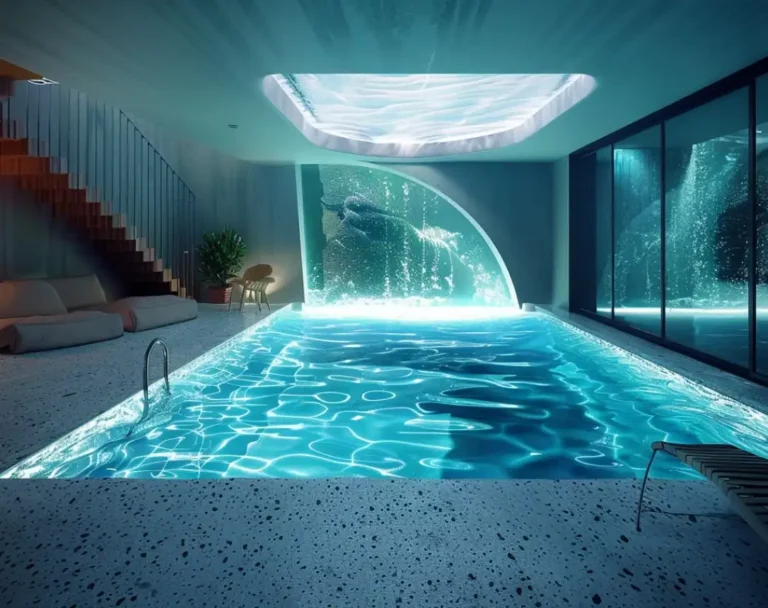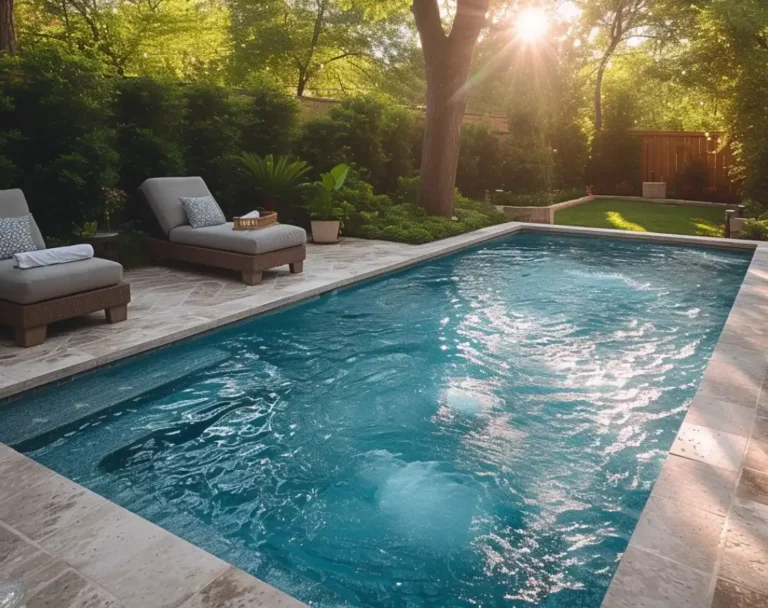Safety first, fun always! “How Long to Wait to Swim After Adding Chlorine: 7 Safe Tips” ensures your pool time is both enjoyable and health-conscious, with expert advice on chlorine use.
Understanding Chlorine in Pool Water

Chemical Properties of Chlorine
Chlorine is the superhero of your swimming pool, working tirelessly to keep the water sanitized and free from harmful bacteria. As a pool owner, you’re using either liquid chlorine or chlorine tablets, both of which release hypochlorous acid when dissolved in water. This acid is the active sanitizer that zaps microorganisms and keeps the pool water sparkling.
Your pool chemistry might feel like a tightrope walk with chlorine. It’s about balance! The concentration of chlorine must be sufficient to sanitize but not so high as to irritate skin and eyes. Aim for a chlorine level of 1-3 parts per million (ppm) for the perfect balance.
Checking Chlorine and pH Levels
To ensure your pool remains your watery oasis, conduct regular checks of both the chlorine and pH levels.
- For chlorine, use a test kit or test strips and check that it’s within the optimal range of 1-3 ppm.
- The pH of your pool—a measure of how acidic or alkaline your water is—should ideally hover between 7.4 and 7.6. This range ensures maximum effectiveness of chlorine and sublime swimmer comfort.
Maintaining this delicate harmony requires regular testing, often weekly, or more frequently if the pool is used heavily. Also, keep an eagle eye on alkalinity and calcium hardness as part of your routine. And don’t forget about cyanuric acid, chlorine’s best friend that shields it from the sun’s rays, extending its sanitizing power.
The Process of Adding Chlorine

Different Forms of Chlorine
When you’re ready to add chlorine, you’re met with a few choices. Granular chlorine is quickly soluble, makes spot treatments a breeze, and is applied directly to your pool water. On the other hand, chlorine tablets offer a slow-dissolving, steady release of chlorine and are often used in floating dispensers or automatic feeders, providing a continuous and long-term chlorination solution.
- Granular Chlorine:
- Dissolves immediately
- Ideal for quick adjustments
- Chlorine Tablets:
- Slow-release
- Perfect for ongoing maintenance
For those with a hot tub, spa-specific products labeled “spa chlorine” should be used to ensure compatibility and safety for a smaller volume of water.
Shocking the Pool
Shock treatment is the intense chlorination tactic that elevates chlorine levels suddenly to combat algae, bacteria, and other contaminants. Shocking your pool is an integral part of chlorine management; it reinvigorates the water, obliterating impurities for a crystal-clear swim. Whether utilizing liquid shock or granular shock, follow the product label accurately for proper application and quantities.
Here’s a quick guide:
- Pool Shock Treatment:
- Stick to a routine schedule or as needed for water clarity maintenance
- Non-Chlorine Shock:
- Useful for immediate swim readiness, as it allows you to swim shortly after application
Remember, the art of shocking your pool is a balancing act. Too little won’t clear the water, while too much requires a longer wait before you can dive back in. Always aim for the right shock treatment, keeping in mind the product’s instructions and the water conditions for your specific pool type.
How Long to Wait to Swim After Adding Chlorine?

Ideal Waiting Time After Treatment
To maintain safety and healthy swimming conditions, you should typically wait at least one hour before diving into the water after adding chlorine. This period allows chlorine to effectively eliminate harmful bacteria, algae, and microorganisms. However, for some forms of chlorine, like chlorine shocks, a 24-hour wait is advisable. Always use a test strip to confirm that chlorine levels reach the safe range under 5 ppm before swimming to prevent skin and eye irritation.
Effects of Chlorine on Health
Chlorine is your pool’s defender, banishing bacteria and keeping the water clean. But if levels are too high, it can lead to skin rashes, redness, and eye discomfort. Swim after adding chlorine only when the level is adequately balanced to steer clear of these irritations. Chlorine can also combine with sweat and body oils to form chloramines, which might not only cause irritation but also emit a strong odor that’s often mistaken for high chlorine.
FAQ:
Can you swim right after adding chlorine?
It’s best to wait at least 30 minutes to an hour after adding chlorine before swimming to allow it to properly disperse.
Can I swim 12 hours after shocking the pool?
You can typically swim 12 hours after shocking the pool, once chlorine levels drop to safe for swimming, usually below 5 ppm.
Can you swim while chlorine tablets in the pool?
Avoid swimming while chlorine tablets are actively dissolving in the pool to prevent skin irritation and ensure even chemical distribution.
How soon can you swim in a newly filled pool?
After filling a new pool, balance the chemicals and allow the water to circulate for at least 24 hours before swimming.




